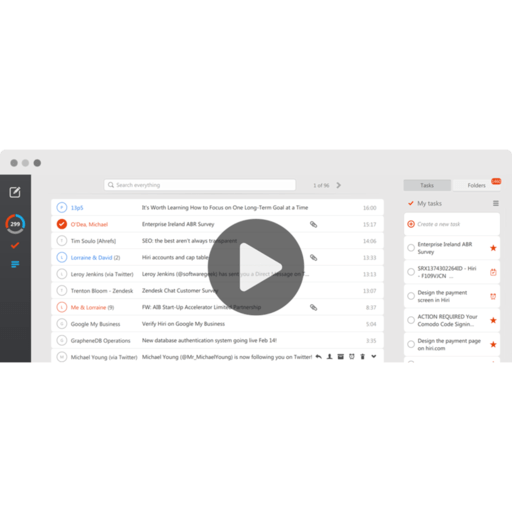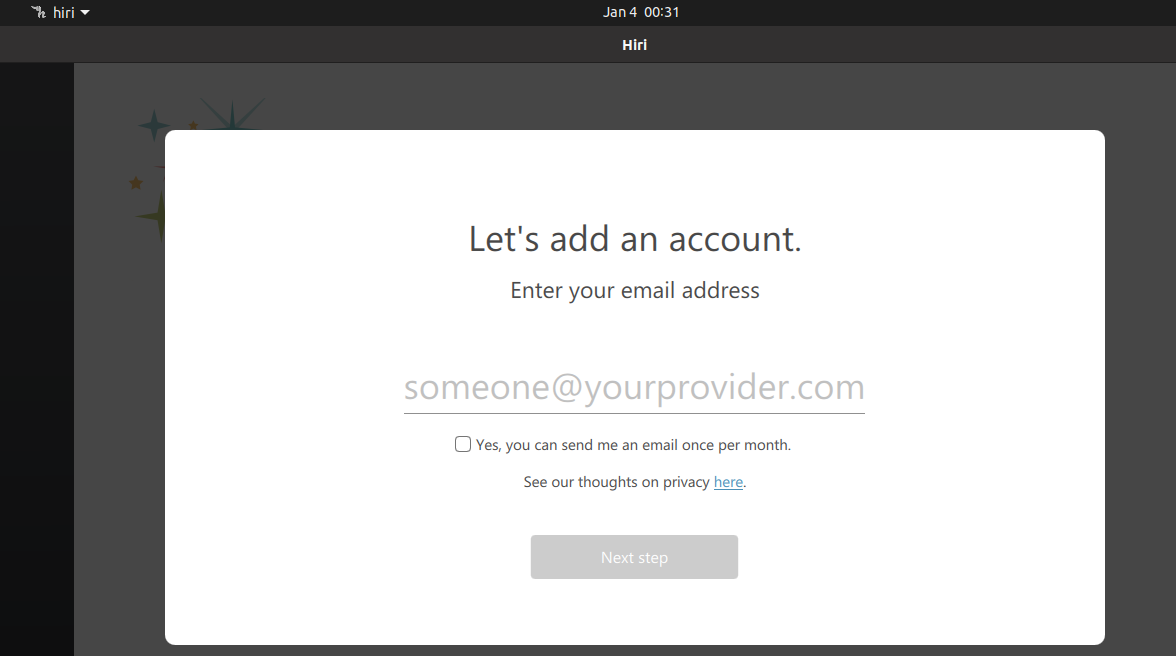

Consider, too, that it takes most people 2 minutes to recover from an interruption and get their thoughts back on track, which means 3 minutes of solid work before they’re interrupted again. Power has a long list of email stats (compiled by Thomas Jackson, a professor at Loughborough University who’s a board advisor for Hiri), including that the average user checks his email every 5 minutes and receives around 100 emails a day, which means potentially 100 interruptions a day. Well, immediately isn’t completely accurate, either. While today most of us jump at our email alert chime like so many Pavlovian dogs, Hiri separates emails in this way so it’s immediately clear whether you really do need to deal with something or it’s information you can get to on your own time. Hiri Takes On the Challenge of Reinventing Email Still another: The “To:” line is designated as “Action,” while “Cc” is called “FYI.” Because if you write the subject after you’ve gone through the process of thinking through and writing the email, “you’ll write a better one,” said Power. “If you see the person, you’ll be gentler in your approach,” he said.Īlso in the subtle-but-major camp: The subject line is at the bottom of the email. Power’s hope is that the photo reminds us, particularly when we’re frustrated or upset, that there’s an actual human on the other end of the email. Using design subtleties to nudge behavior changes is quintessential Hiri.Įven the photo of the sender is intentional, said Power, noting there’s a reason that Darth Vader wears a face-obscuring helmet-it makes a viewer less sympathetic. Here, too, once the circle is ticked off, the subject line gets crossed out, rather than the item disappearing, so at the end of the day, one can see one’s accomplishments. If an email is something you need to do something about-something that can go in the day’s to-do list-you can drag it aside and it falls into a to-do list on the right of the screen, showing a photo of the sender, the title of the email and a little circle to tick off when the action is completed. If you choose to defer an email, you can choose when you’d like to deal with it (“tonight,” “tomorrow,” “4 p.m.,” etc.), and it’ll disappear and reappear as designated. There are actually four small buttons at the top of the screen to do exactly these things. When an email comes your way, you either do something about it, delete it, defer it or delegate it.

Hiri is based on the four D’s of time management that Microsoft has championed. breakfast meeting) remains present but crossed off. It’s both subtly different from and a complete reimagining of email.įor starters, when you open it, you see your schedule/to-do list anything you’ve already accomplished (say, an 8 a.m. It’s less an inbox than it is an organizing force. Power and Kavanagh collaborated to create Hiri, an email platform for Microsoft Office 365 and Exchange that, in its design, seeks to make teams more efficient and more effective-in part, by using email less. “Cc’s are a scourge in any large company.” And 40 percent are poorly targeted-maybe you get stuck on a cc list,” he added. “In reality, only 10 percent of emails are something you need to do something with. “Email causes a lot of stress,” Power told eWEEK, explaining that people have subscribed to an idea, or a fear, that everything that comes into their inbox is something they need to take care of. Acquaintances with a shared passion for technology, they decided to take on Graham’s challenge.

#Hiri email software#
… But it is a disastrously bad todo list.”Īt the time, Dave Power was working on UX for Telefonica and Kevin Kavanagh ran a software development company. “Email was not designed to be used the way we use it now,” wrote Graham. In a 2012, Paul Graham, co-founder of venture capital firm Y Combinator (which has invested in Dropbox, Airbnb, Stripe and Reddit, among others), wrote a blog post describing truly ambitious startup ideas, one of which was to fix email.


 0 kommentar(er)
0 kommentar(er)
